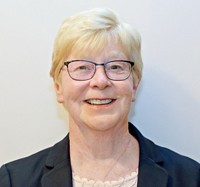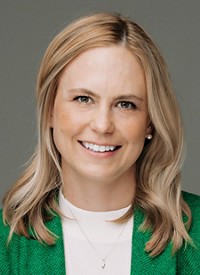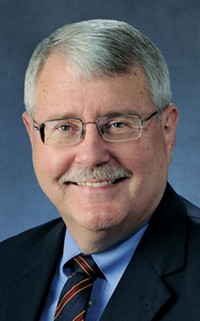Advertisement
Grab your lab coat. Let's get started
Welcome!
Welcome!
Create an account below to get 6 C&EN articles per month, receive newsletters and more - all free.
It seems this is your first time logging in online. Please enter the following information to continue.
As an ACS member you automatically get access to this site. All we need is few more details to create your reading experience.
Not you? Sign in with a different account.
Not you? Sign in with a different account.
ERROR 1
ERROR 1
ERROR 2
ERROR 2
ERROR 2
ERROR 2
ERROR 2
Password and Confirm password must match.
If you have an ACS member number, please enter it here so we can link this account to your membership. (optional)
ERROR 2
ACS values your privacy. By submitting your information, you are gaining access to C&EN and subscribing to our weekly newsletter. We use the information you provide to make your reading experience better, and we will never sell your data to third party members.
ACS News
ACS Launches New Program Management Initiative
by Bonnie A. Charpentier, District Vi Director
October 20, 2014
| A version of this story appeared in
Volume 92, Issue 42
In 2014, the American Chemical Society will spend more than $43 million on programs managed within the Membership & Scientific Advancement Division, the Education Division, and the Office of Public Affairs to support the society’s mission. These programs are largely funded by the net revenue contributions from Chemical Abstracts Service and ACS Publications, as well as from investments, meeting registration fees, and dues.
For many years, ACS has grappled with the best way to allocate resources among the wide range of programs, products, and services offered to our members and the larger chemistry enterprise. Developing a “program portfolio management process” that helps optimize the allocation of resources sounds like it should have been an easy, straightforward task, but it has taken a number of years.
As background, in late 2005, ACS formed the Program Review Advisory Group. PRAG included members of the ACS Board of Directors, councilors, members of the Committee on Budget & Finance (B&F), and chairs from committees with oversight of individual programs.
PRAG reviewed groupings of related programs on a rotating four-year basis and provided feedback to programs on their individual goals and effectiveness. The group did not recommend the meaningful reallocation of resources or sunsetting of programs as originally hoped because it was unable to assess the entire portfolio of programs. This was largely because it lacked a common assessment measure that would enable a comparison among different types of programs.
In 2009, in response to the financial downturn of 2008–09, ACS staff and the board carried out some reallocation and cutbacks of programs as well as other reductions in society spending. In 2011, participants in ACS’s Financial Planning Conference recommended the development of a dynamic process to manage the society’s wide array of programs.
In 2012, the board, working with B&F, began developing a detailed Society Program Portfolio Management Process. Development of the process was overseen by a board oversight group and involved dozens of people.
During 2012, the board oversight group developed a comprehensive outline that listed each element to be incorporated in the portfolio management process. Some elements, such as the New Program Funding & Reauthorization Process, have been in place for many years and are being revised and linked to the other process elements to design a seamless process flow.
Other elements of the new portfolio management process have been created from scratch. These elements include the evaluation of a program’s impact on and advantage to key constituencies and the assessment of and provision of feedback on any prospective new program before a full program funding request is prepared and evaluated. An important component of the new process involves new comprehensive training materials to help committee members and staff develop consistent goals and metrics across a range of programs.
In 2013, each of these multiple components of the overall process were detailed and documented by smaller working groups of the oversight group that included board members, B&F members, and previous PRAG members.
The new portfolio management process was beta tested during the first half of 2014, under the guidance of the oversight group and with the assistance of the B&F Program Review Subcommittee, ACS’s executive director and chief executive officer, and society program directors. Since then, the board oversight group has continued to make revisions to the process on the basis of the beta test results; the group is now finalizing the documentation and training materials. This information has been written up in a “Society Program Portfolio Management Handbook” that offers a “how to” guide for each step in the new annual process. The handbook will be made available to participants in the portfolio management process and will be updated on a regular basis.
The portfolio management process is now being rolled out for the upcoming 2015 budget cycle with the intent of providing a rigorous, transparent, and efficient way of strategically adding new programs, routinely reviewing and updating existing programs, comparing the relative value of programs, and ultimately, determining an optimal rebalancing of resources within the society program portfolio. The process is based on a partnership between ACS volunteer members of governance and ACS staff. It permits adjustments for changing strategic environments and priorities and ensures that no program is guaranteed funding in perpetuity. As this portfolio management process is implemented, we will continually learn from our experiences and adjust the process accordingly.
The ACS Board of Directors, B&F, and the executive leadership team welcome your questions and suggestions at sppm@acs.org for this important initiative. We are proud of the fact that we are in the forefront of scientific societies with the development of this process, and I thank the many volunteers and staff who have lent their thoughts and expertise to building it. When fully implemented, the new process should ensure a more optimal allocation of ACS human and financial resources among programs that fulfill the ACS vision of improving people’s lives through the transforming power of chemistry.
Views expressed on this page are those of the author and not necessarily those of ACS.






Join the conversation
Contact the reporter
Submit a Letter to the Editor for publication
Engage with us on Twitter